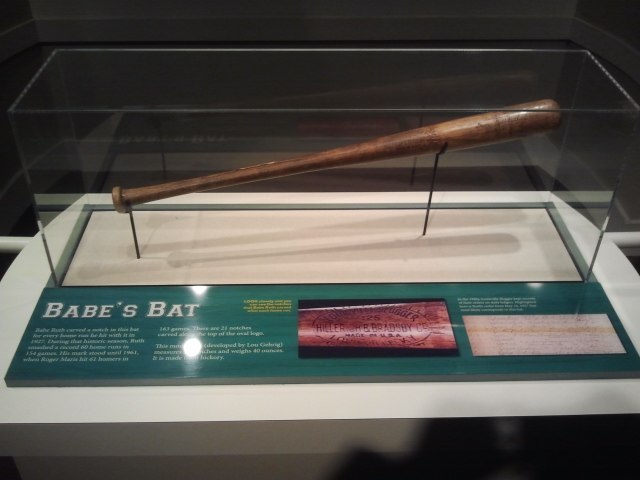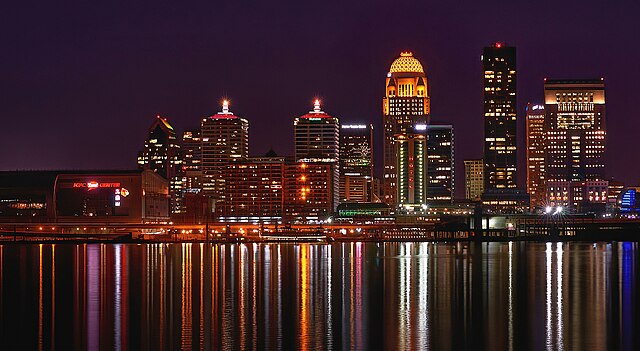Louisville Slugger Museum & Factory
The Louisville Slugger Museum & Factory, is a museum and factory tour attraction located in Louisville, Kentucky's "Museum Row", part of the West Main District of downtown. The museum showcases the story of Louisville Slugger baseball bats in baseball and in American history. The museum also creates temporary exhibits with more of a pop culture focus, including collaborations with the Norman Rockwell Museum, the Charles M. Schulz Museum and Research Center, Coca-Cola, LEGO artists Sean Kenney and Jason Burik, Topps Trading Cards, The Children's Museum of Indianapolis, and Ripley's Believe It or Not!.
The World's Largest Baseball Bat stands outside of the museum entrance
Hillerich & Bradsby bat used by Babe Ruth in a 1927 game, exhibited at the museum
The Signature Wall at Louisville Slugger Museum & Factory. Honus Wagner was the first player to sign a promotional contract with Hillerich & Bradsby in 1905, becoming the first athlete to endorse a product in history.
In 2006, H&B CEO John Hillerich IV visited a factory in Canada that was making pink baseball bats. He brought this idea back to the United States and quickly gained support, and Louisville Slugger has made pink bats for Mother's Day ever since.
Downtown Louisville is the largest central business district in the Commonwealth of Kentucky and the urban hub of the Louisville, Kentucky Metropolitan Area. Its boundaries are the Ohio River to the north, Hancock Street to the east, York and Jacob Streets to the south, and 9th Street to the west. As of 2015, the population of downtown Louisville was 4,700, although this does not include directly surrounding areas such as Old Louisville, Butchertown, NuLu, and Phoenix Hill.
The Louisville skyline
400 West Market
The Richardsonian Romanesque Levy Building, built in 1893, an example of downtown Louisville's classic architecture and revitalization; the upper four floors have been converted to 23 loft condominiums
The Columbia Building, Louisville's second skyscraper








